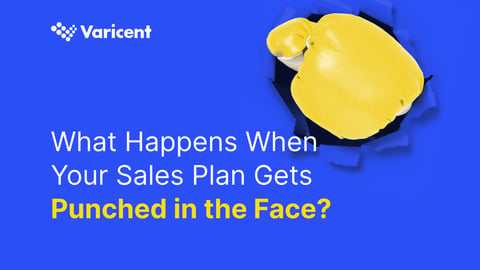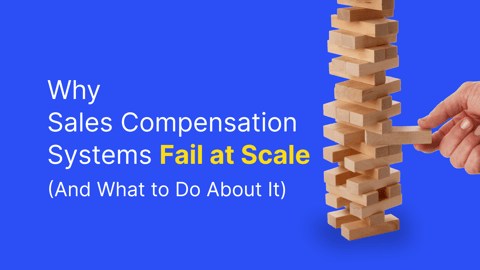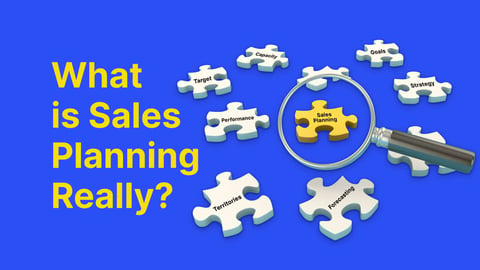Picture this – you’re in a pipeline review meeting. Your team is discussing deals in various stages of your funnel. And as you compare different opps to your forecast, you see this gap:
- An opp in stage 2 (let’s call it “Qualifying”) is in Commit for your forecast.
- An opp in stage 4 (let’s call it “Internal Sale”) doesn’t have any senior leadership involved in the deal yet.
Why is there such a gap between how stage 2 and stage 4 are being used?
This is a very common problem for revenue organizations. There are many articles on designing your sales stages around a sales methodology (i.e. MEDICC) and your buyer journey. In this post, I want to take a Revenue Operations approach to stage design, starting with asking a few core questions:
What is the point of having deal stages? Who are they for? What questions should they answer?
For me, deal stages need one priority: for sales reps to communicate internally about their funnel in a consistent way.
Think about all the ways stages are used:
- Stages are used by sales management to flag risks, like age, activity, size, MEDICC criteria, etc. But to do this you need consistent usage – otherwise, you can’t compare won/lost deals that were in that same stage.
- Stages are used by sales leadership to determine the pipeline, how the pipeline is changing, and inform the forecast.
- Stages are used by company leadership to identify what needs to be in the funnel, by calculating stage conversion rates and stage velocity in a work back model.
- Stages are used by marketing and sales enablement to help you identify and remove friction, like which stage do we lose deals in? Which stage do deals stagnate in? What are the loss reasons here and how can we mitigate them with programs?
Many of these questions become difficult to answer when stages are abstract and inconsistently used. The problem comes in with stage design.
In many cases, sales stages are driven by the preferences of the VP of Sales or driven by external “best practices” to create uniformity across companies. In many cases, this advice is driven by the sales process instead of the need to communicate effectively internally. The same is true when sales stages are driven entirely by the buyer journey. It’s important to understand your buyers journey, and not to jam them into your process – but it’s equally important to be able to communicate across multiple types of sellers, segments, and buyers internally.
There is no best set of stages that every company can use. In fact, you may need different sets of stages for different types of selling done internally (i.e. new business vs renewal, or SMB vs enterprise). It’s entirely dependent on your business.
To figure out what’s right for you, you need to interview your sales reps to understand your sales motion:
- What do we do when we find someone we want to sell to?
- What happens next? And after that? After that?
- How do we know they’re moving forward?
- Aggregate these into measurable phases or stages you want to communicate about internally about how these deals are being managed
From here, you can create entrance and exit criteria for each stage.
Construct your new stages into some shared language with enough granularity that you can get visibility into where things are stuck.
Let’s dive into a specific example. Should the top of funnel have very specific stages for the discovery call? Personally, I love having disco/demo scheduled, disco/demo completed as early funnel stages. Why?
- It’s very descriptive when something enters or exits that stage
- You can see if deals are getting stuck in disco/demo scheduled for 3+ months and the demo never happened, and the deal was never closed out, and problem solve that friction in your funnel.
- You can measure your conversion to completed meeting in standard reporting.
- You can identify if deals get stuck in “disco/demo completed” and never move further in the funnel, which could mean the deal wasn’t qualified correctly or wasn’t dispositioned out of the funnel to be sold to again down the road.
Let’s compare this to using a single stage called “Qualifying”:
- You have to build completely separate meeting reports from the event object in Salesforce that are very difficult to produce in Salesforce, as well as a suite of customizations on the event object, to even answer the question of if meetings happened or didn’t happen.
- What does qualifying even mean? Is it about pre-qualification, like understanding if the account is a fit? Is it about defining the use case and collecting BANT criteria? Is it owned by the SDR or the AE team? How long can you be “Qualifying” something?
It’s abstract. It’s difficult to have a shared understanding of. It’s hard to enforce consistent behaviors or measure the behaviors of that stage. Use the thought process of this example against your own stages.
Another problem that crops up is having too few stages. If you have too few stages in your funnel, for the length of your sales process, then the stages aren’t going to be valuable to evaluate where deals are stuck. For example, you only have 4 stages – stage 1 is owned by the SDRs, stage 2 is where the sales process is done, and stages 3 and 4 are about contracting. How do you evaluate or understand where your sales process is broken?
Frequently this happens when you have too many transactional stages (send agreement, verbal, legal review) for your bottom of funnel stages.
Once you define new stages, share the language with your team before building it out. Ask a bunch of folks – what does this stage mean to you? When would you move a deal into this stage? Do you get the same response, or does everyone think “Selecting” means something completely different?
Lastly, a few other RevOps lessons learned over the years:
- Your opportunity stages are related but wholly separate from your forecast categories. Conflating stage probability (75% of things in this stage are won) with forecast category (commit) is going to get you into trouble. If your sales leadership team only manages the business off forecast stage, you’re not going to be able to understand where your funnel works and where it’s broken.
- This is controversial, but it really doesn’t matter if your VP of Sales likes your opportunity stages if they aren’t being used consistently (or at all). If stages aren’t being used then they don’t need to exist. You can’t measure anything.
- This is also controversial: it doesn’t matter if your opportunity stages align with your buyer’s journey. Does your buyer journey include a discovery call? Probably not. Is that hugely important stage to measure and understand as friction points or hand-off in your own business? Yes. I’m not advocating for ignoring the buyer journey – it has to inform what you do; I’m advocating for creating a measurable internal process you can iterate on and improve.
Your sales stages are about managing your internal sales process so that you can communicate about and troubleshoot your business internally. That’s priority 1. If your sales stages don’t answer those questions, it’s time to refactor them.




